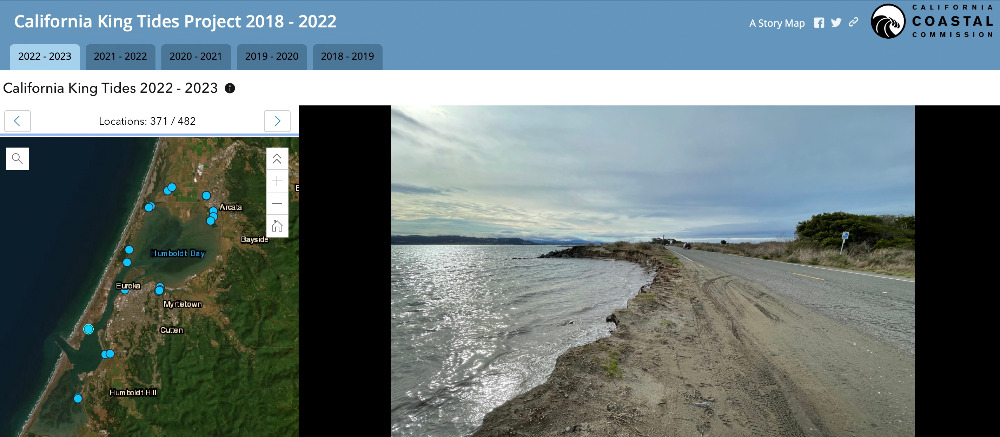Return the Coastal Commission’s authority to help relieve the affordable housing crisis
Read More
 The California Coastal Commission's King Tide Photo Project website features photos from the Humboldt Bay area and across the state. This interactive map allows you to zoom in on areas of interest.
The California Coastal Commission's King Tide Photo Project website features photos from the Humboldt Bay area and across the state. This interactive map allows you to zoom in on areas of interest.
Anyone can upload photos online or via a smartphone app. Click HERE to upload yours.
Droughts and sinking groundwater levels due to climate change and water consumption have become a familiar worry in many parts of the world. But coastal California is poised to soon encounter a very different kind of problem: Levels of groundwater may rise.
“It’s a concern,” said Ben Hagedorn, Associate Professor of Geological Sciences at California State University Long Beach.
“What we see near the coast is that the rising sea level pushes up the saline groundwater,” he said.
In the process, the fresh groundwater used for drinking gets pressed toward the surface as well since it usually floats on top of the heavier salty groundwater. This could make coastal regions more prone to flooding, but there are also more insidious consequences.
As the rising fresh water seeps into surface soils, toxins such as cadmium and lead from hazardous waste sites, landfills and other contaminated areas could get flushed into drinking supplies, Hagedorn said.
Rising levels of fresh groundwater could make this problem more widespread and also wash toxins from shallow aquifers into the deeper reservoirs that currently provide drinking water. And soluble pollutants aren’t the only concern.
Hagedorn suggested water authorities should instead take a new look at hazardous waste sites that are currently considered remediated. Hagedorn suggested water authorities should instead take a new look at hazardous waste sites that are currently considered remediated.
“There are a lot of older locations, some dating back to the 1970s or even the 1950s when remediation technologies were not what they are now, that may still contain a lot of contaminants,” he said.
Additional remediation may be necessary to prevent these toxins from becoming mobilized as the water tables rise in the soil.